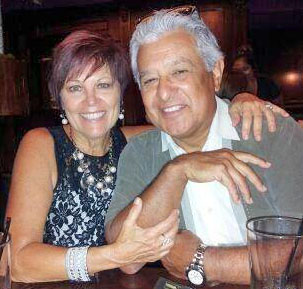The Saints became a franchise as a direct result of the AFL-NFL merger.
Several pro football teams had looked to the City of New Orleans as a possible home, such as the Dallas Texans (AFL) in 1963. After years of war, escalating player salaries, and dwindling profits, the AFL and NFL began discussions about a possible merger of the two leagues.
On June 8, 1966, it was announced that the leagues would merge completely beginning with the 1970 season. All franchises in both leagues would remain in their present location, with a common draft and common preseason schedule beginning in 1967.
But, there was a problem. Even though representatives of both leagues agreed to the unification, the House Judiciary Committee (HJC) in Washington, D. C. had to exempt the merger from antitrust law sanctions. At the time, the chairman of the HJC was Emanuel Celler from New York.
By the fall of 1966, Celler refused to let the bill out of committee. The NFL commissioner, Pete Rozelle, was introduced to Louisiana House Majority Leader Hale Boggs; who was looking for some political enhancement ever since he voted for the civil rights amendment in his state. Boggs offered to help push the bill through in exchange for an NFL expansion franchise granted for the Crescent City.
Boggs covertly attached the league bill to a budget bill that was certain to pass, thus detouring Celler altogether. When the budget bill passed on October 21, 1966, the NFL and AFL got their merger and New Orleans got an immediate franchise.
At a league meeting on November 1, it became official. That date just happened to the Catholic holiday All-Saints Day. New Orleans has a large Catholic population and numerous centuries-old Catholic churches. It was only fitting to nickname the team the "Saints" for the day they were officially conceived.
History was made in 1970 when kicker Tom Dempsey booted a 63-yard field goal to defeat the Lions 19-17.
The franchise has won one NFL title: Super Bowl XLIV.
Origin Facts:
Established: 1967
Original Owner: John Mecom, Jr.
Original Colors: black, gold & white
First Stadium: Tulane Stadium, seating 80,985
Retired Jerseys: No. 31 Jim Taylor, No. 81 Doug Atkins, No. 57 Ricky Jackson
You're going to love this seasonal version of our favorite poke cake recipe. The creamy vanilla pudding, delightful whipped topping, and the delicious pumpkin flavor make this easy poke cake recipe our most decadent way to enjoy fall time desserts. Our Pumpkin Spice Poke Cake is perfect through-and-through!
Poke cakes are one of those desserts that everyone is happy to see on the table. Whether you're making it for your spouse and kids, or whether you're bringing it to a big group gathering, you can be sure that this pumpkin poke cake will satisfy. We love the combination of the creamy vanilla pudding with the rich spices in the cake. It's a combination that might go out of season, but it never goes out of style.
We also love that this recipe is super easy to make. It requires a little advanced planning, since you have to let the cake chill, but the hands on time is nice and short. This pumpkin poke cake is so easy to make that you won't even mind if your family asks you to make a second one!
- 1 (15.25-ounce) package spice cake mix
- 1 (15-ounce) can pure pumpkin
- 2 eggs
- 3/4 cup water
- 2 (4-serving size) packages instant vanilla pudding mix
- 1 1/4 teaspoons pumpkin pie spice
- 3 1/2 cups milk
- 1 (12-ounce) container frozen whipped topping, thawed
- Preheat oven to 350º. Coat a 9- x 13-inch baking dish with cooking spray.
- In a large bowl with an electric mixer, beat cake mix, pumpkin, eggs, and water until thoroughly combined. Pour into baking dish.
- Bake 25 to 30 minutes, or until toothpick inserted in center comes out clean. Let cool. Using the handle of a wooden spoon, poke 25 to 30 holes in cake.
- In a large bowl, whisk pudding mix, pumpkin pie spice, and milk until slightly thickened. Pour mixture into holes and spread evenly over top of cake. Spread whipped topping on top, cover, and refrigerate at least 4 hours or until ready to serve.
And births this date include...

1957 – Lyle Lovett, American singer
Daylight Saving Time ends on the first Sunday in November at 2:00 AM.
The practice of Daylight saving time (DST) (also known as summer time) advances clocks during the summer months. It causes us to lose an hour for one day. However, the practice allows people to get up earlier in the morning and experience more daylight in the evening. Typically, users of DST adjust clocks forward one hour near the start of spring. Then, they change them back again in the autumn.
The system has received both advocacy and criticism. Setting clocks forward benefits retail business, sports, and other activities exploiting sunlight after working hours. However, the practice causes problems for evening entertainment and other activities tied to the sun or darkness. For example, farming and fireworks shows are both affected.
Although some early proponents of DST aimed to reduce evening use of incandescent lighting (formerly a primary use of electricity, modern heating and cooling), usage patterns differ greatly. Additionally, research about how DST currently affects energy use is limited or contradictory.
Problems sometimes caused by DST clock shifts include:
- they complicate timekeeping
- can disrupt meetings, travel, billing, record keeping, medical devices, heavy equipment,
- it especially impacts sleep patterns
Software can often adjust computer clocks automatically, but this can be limited and error-prone. Programming is particularly problematic when various jurisdictions change the dates and timings of DST changes.
HOW TO OBSERVE
Depending on where you live, make sure to turn back your clocks. What will you do with your extra hour?
DAYLIGHT SAVING TIME ENDS HISTORY
The New Zealander George Vernon Hudson proposed the modern idea of daylight saving in 1895. Germany and Austria-Hungary organized the first implementation, starting on 30 April 1916. Many countries have used it at various times since then, particularly since the energy crisis of the 1970s.













